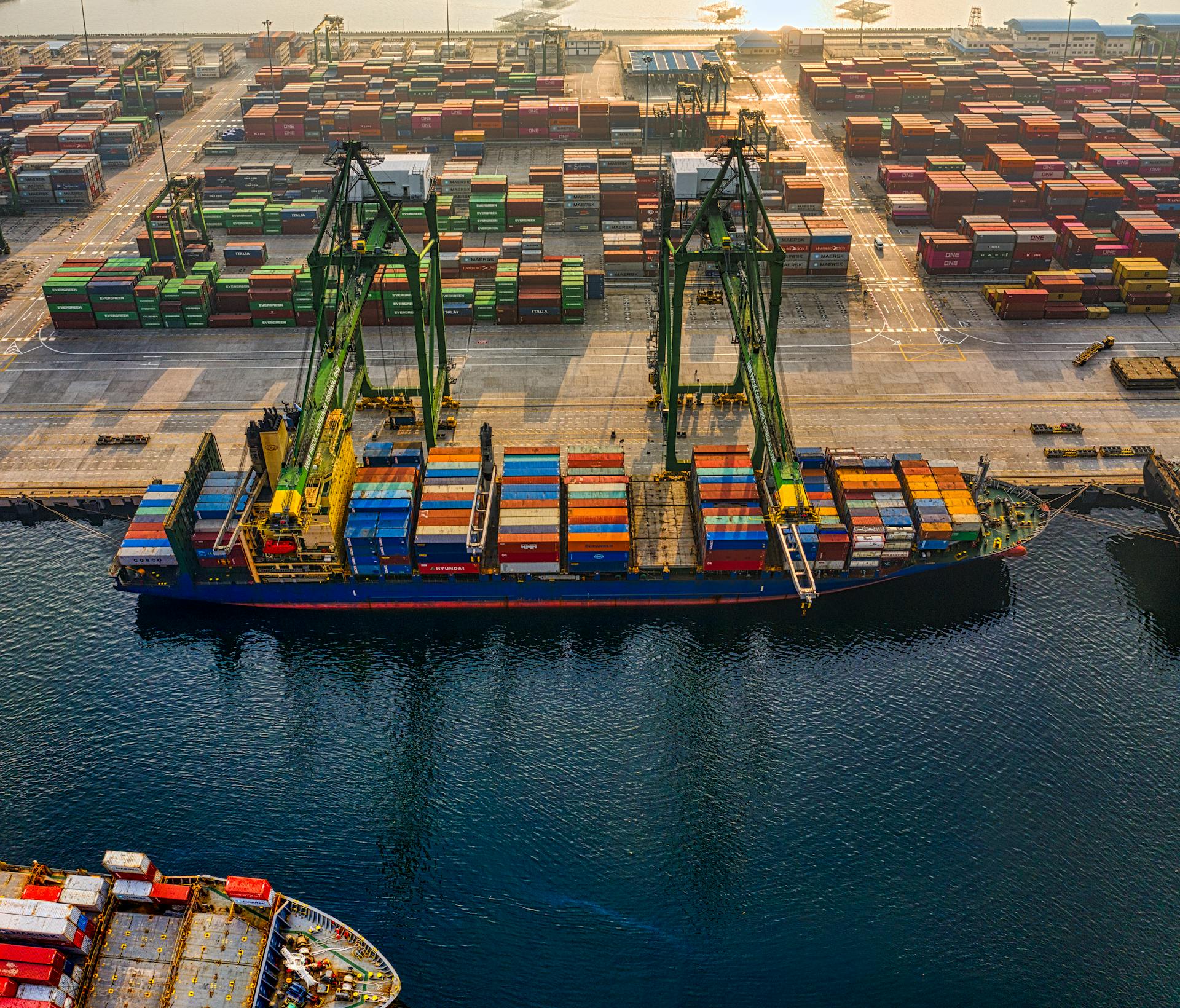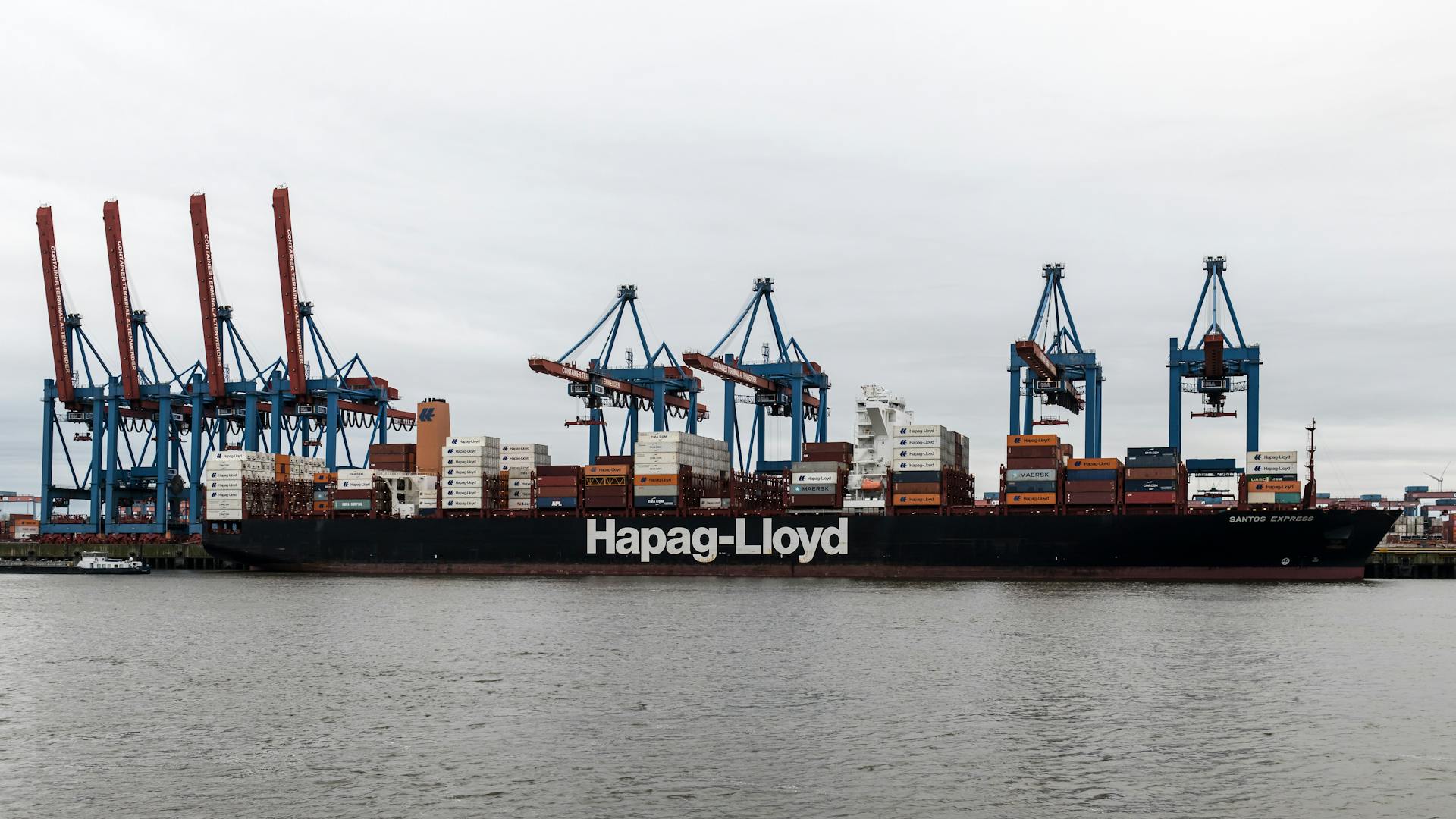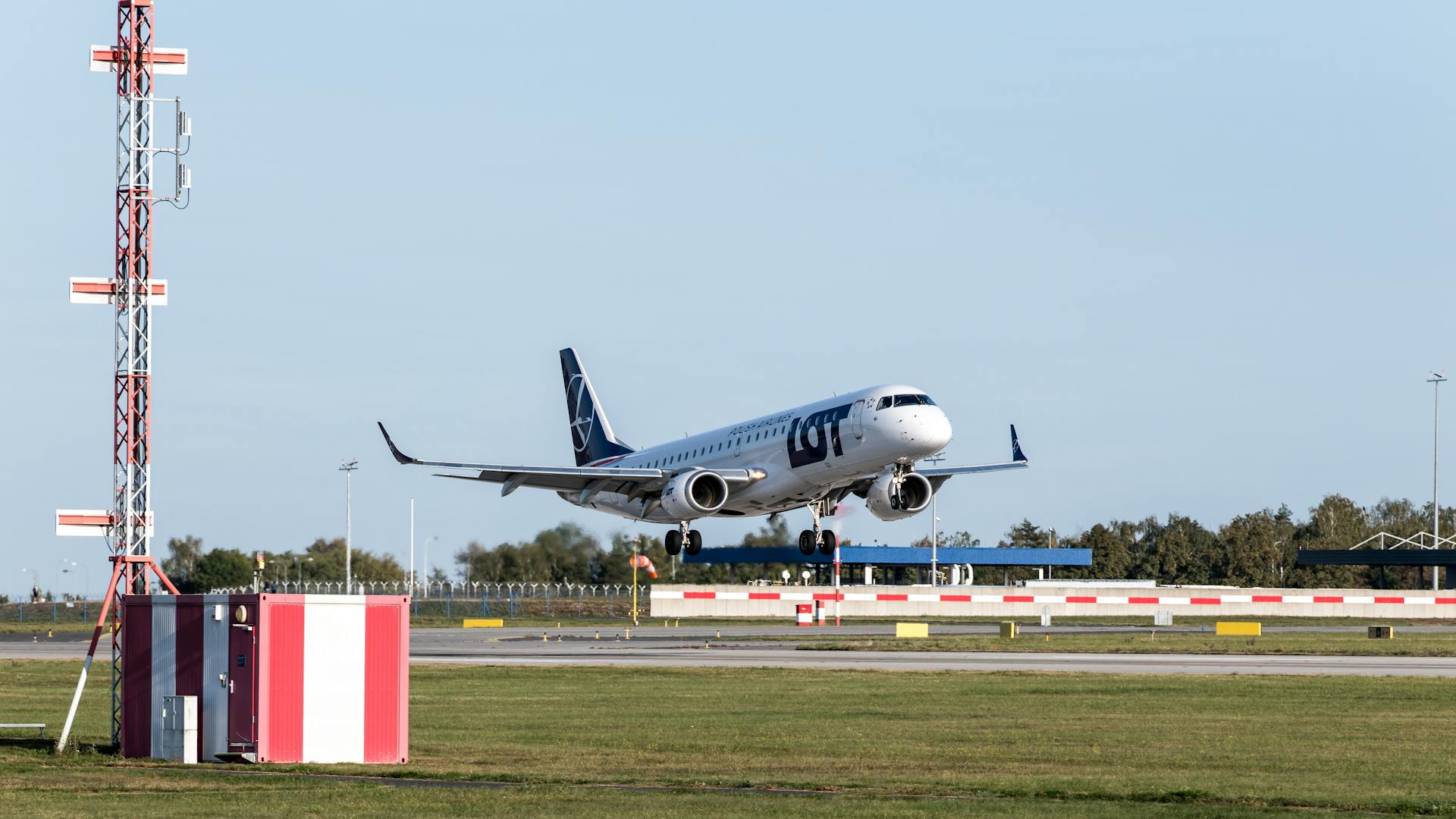
The busiest ports in Europe are a vital part of the continent's economic landscape. They play a crucial role in facilitating international trade, connecting European countries to the rest of the world.
The Port of Rotterdam in the Netherlands holds the top spot, handling over 460 million tons of cargo in 2020. This is a significant increase from 2019, with the port experiencing a 4% growth in container volumes.
The Port of Rotterdam's growth can be attributed to its strategic location and state-of-the-art infrastructure. It's one of the few ports in Europe that can accommodate the largest container vessels in the world.
Busiest European Ports
The busiest European ports are a crucial part of the continent's trade infrastructure, with several ports vying for the top spot. The Port of Rotterdam in the Netherlands is the largest seaport in Europe, covering an area of 12,500 hectares and boasting a container volume of 13.4M TEUs in 2023.
The Port of Antwerp-Bruges in Belgium is the second busiest, with a container volume of 12.5M TEUs in 2023. The Port of Hamburg in Germany ranks third, with a container volume of 7.7M TEUs in 2023.
Here are the top 5 busiest European ports:
These ports are critical gateways for trade across Europe and beyond, offering advanced infrastructure and multimodal distribution options.
Fastest Growing Container Ports
The Port of Piraeus has seen substantial growth, driven by its favorable location for transshipment traffic between Asia and Europe, and significant investment by China’s COSCO Shipping that has positioned Piraeus as a key node in the Belt and Road Initiative.
The Port of Valencia has continued to expand its capacity and improve its infrastructure, cementing its position as the leading port in the Mediterranean.
With a €1.5B investment in an expanded terminal, automation and sustainability, Valencia aims to handle larger volumes and further enhance its role in connecting Europe with global markets.
These two ports are among the busiest in Europe, handling massive volumes of cargo and playing a crucial role in connecting the continent with global markets.
Other Notable European Ports
The Netherlands' Port of Rotterdam is a notable mention, handling over 460 million tons of cargo in 2020. It's a significant hub for container shipping, with the largest cargo terminal in Europe.
The Port of Rotterdam's massive size and cargo volume are due in part to its strategic location on the Rhine River, which connects to the North Sea. This allows for easy access to both inland and international trade routes.
Other European ports worth mentioning include the Port of Hamburg in Germany, which is a key player in the region's automotive industry, and the Port of Antwerp in Belgium, which is a major hub for oil and gas imports.
Hamburg, Germany
Hamburg, Germany, is the third busiest container port in Europe, with an impressive throughput of 8,261,977 TEU in 2023.
Its strategic location and well-developed rail and road links make it a crucial hub for the European supply chain, serving as a gateway for trade with Asia, particularly China.
Hamburg is known as the "Gateway to the World", reflecting its importance in international trade.
Authority of Valencia
The Port Authority of Valencia, Spain is a significant player in European ports, managing three state-owned ports along the East coast.
ValenciaPort, as it's also known, is one of the busiest ports in Europe, handling a massive 5,428,307 TEU in 2020.
It has an impressive intermodal infrastructure that provides a gateway to Southern Europe and Spain's major cities by rail and highway.
The port's strategic location allows it to distribute goods over a radius of 2,000km, reaching a market of 270 million consumers in European countries and North Africa.
Barcelona
Barcelona is a major hub of commercial activity, serving as a key port for the Mediterranean region. The port of Barcelona is one of the busiest in the Mediterranean and the largest in Spain.
It's located in Catalonia and has two container terminals with a berthing line of over 3,000 metres. The port provides approximately 100 services with 200 ports on five continents.
Barcelona is often referred to as the best international container terminal, capable of handling vessels up to 16 metres in draft. This makes it a critical link in the global supply chain.
The port of Barcelona reported 2,958,040 TEU in 2020, a significant achievement considering it declined by 11% compared to 2019. This demonstrates its resilience in the face of changing market conditions.
The port of Barcelona can handle a large volume of cargo, with 3.5 million TEUs passing through annually. This makes it an essential gateway for international trade in the region.
Sources
- https://www.beacon.com/resources/largest-ports-europe
- https://advantage.vn/en/top-10-the-busiest-container-ports-in-europe/
- https://powerhouseqld.com.au/top-10-largest-ports-in-europe/
- https://www.sevenseasworldwide.com/need-help/busiest-port-in-the-world/
- https://en.wikipedia.org/wiki/List_of_busiest_ports_in_Europe
Featured Images: pexels.com

